Hey there, fellow food enthusiasts! Today, I’m going to share with you a lip-smacking and fiery recipe that will take your taste buds on a thrilling adventure – the famous Kung Pao Chicken! If you’re a fan of bold flavors and a hint of spiciness, then this dish is right up your alley. So, let’s roll up our sleeves, grab our aprons, and dive into the world of Kung Pao Chicken.
[ez-toc]
History
The history of Kung Pao Chicken is as rich and flavorful as the dish itself. This beloved Chinese recipe traces its roots back to the Sichuan province, known for its bold and spicy cuisine.
The origins of Kung Pao Chicken can be traced back to the Qing Dynasty during the reign of Emperor Xianfeng (1851-1861). It was during this time that a skilled and esteemed court official named Ding Baozhen held the title “Gong Bao,” which translates to “palatial guardian.”
Ding Baozhen was not only a highly respected official but also a passionate lover of food. He had an adventurous palate and especially enjoyed spicy dishes. As the story goes, Ding Baozhen was stationed in the remote and mountainous regions of Sichuan, where he had access to an abundance of local ingredients, including dried red chili peppers and Sichuan peppercorns.
One day, while exploring the local culinary scene, Ding Baozhen was served a dish that combined tender pieces of chicken with the fiery heat of dried red chilies and the unique numbing sensation of Sichuan peppercorns. The delightful blend of flavors and textures impressed him greatly.
Inspired by the dish, Ding Baozhen returned to his palace kitchen and asked the imperial chefs to recreate the tantalizing chicken dish he had experienced. They did their best to replicate the flavors, and Kung Pao Chicken was born.
The dish was named in honor of Ding Baozhen, with “Kung Pao” being a reference to his title “Gong Bao.” Over time, the recipe spread from the palace to the wider public, gaining popularity not only in Sichuan but also throughout China.
In its early days, Kung Pao Chicken was enjoyed primarily by the elite and those in the imperial court. However, as the recipe traveled from region to region, it underwent various adaptations to suit local tastes and ingredients. This led to the emergence of regional variations of the dish with unique twists and flavor profiles.
With the advent of modern transportation and globalization, Kung Pao Chicken eventually found its way to international shores. Chinese immigrants brought the recipe with them, and it quickly became a favorite in Chinese restaurants around the world.
Today, Kung Pao Chicken is celebrated as a symbol of authentic Chinese cuisine and is loved by people of diverse backgrounds. Its spicy and savory flavors, combined with the delightful crunch of peanuts and colorful vegetables, continue to win hearts and taste buds globally.
As the dish’s popularity continues to soar, Kung Pao Chicken remains a testament to the rich history and culinary heritage of China, and it serves as a reminder of the passion for food that inspired a court official centuries ago to create this spicy delight. So the next time you savor a plate of Kung Pao Chicken, remember that you’re not just enjoying a delicious meal, but also a taste of history and culture that has withstood the test of time.
Time
| Step | Time Required |
|---|---|
| Slicing and Dicing the Chicken | 15 minutes |
| Marinating the Chicken | 30 minutes |
| Preparing Vegetables | 10 minutes |
| Making the Kung Pao Sauce | 5 minutes |
| Assembling Ingredients | 5 minutes |
| Cooking the Chicken and Vegetables | 10 minutes |
| Roasting Peanuts | 3 minutes |
| Stir-frying with Sauce and Peanuts | 5 minutes |
| Total Time | 83 minutes (approx) |
Please note that the total time is an approximate estimation and can vary based on individual cooking skills and the specific equipment used in the kitchen. With practice and familiarity with the recipe, the preparation time may be reduced.
Ingredients
| Ingredients | Quantity for 2 Servings |
|---|---|
| Chicken (boneless, skinless) | 300 grams (10.6 ounces) |
| Dried Red Chili Peppers | 5-6 pieces |
| Bell Peppers (assorted colors) | 1 medium-sized |
| Zucchini | 1 small |
| Roasted Peanuts | 1/4 cup |
| Green Onions | 2 stalks |
| Cooking Oil | 2 tablespoons |
| For the Marinade: | |
| Soy Sauce | 2 tablespoons |
| Rice Wine or Sherry | 1 tablespoon |
| Cornstarch | 1 teaspoon |
| Sesame Oil | 1/2 teaspoon |
| For the Kung Pao Sauce: | |
| Soy Sauce | 2 tablespoons |
| Rice Vinegar | 1 tablespoon |
| Sugar | 1 tablespoon |
| Minced Garlic | 2 cloves |
| Grated Ginger | 1 teaspoon |
| Sichuan Peppercorns | 1/2 teaspoon |
| For Garnish: | |
| Sliced Green Onions | For sprinkling |
Please note that the quantities mentioned are for a serving size suitable for two people. Adjust the ingredients according to your preferences and appetite. Enjoy your delicious Kung Pao Chicken meal!
Directions
Step 1: Slicing and Dicing the Chicken
Time Required: 15 minutes
- Begin by selecting boneless and skinless chicken breasts or thighs for a tender and juicy result.
- Neatly slice the chicken into bite-sized pieces to ensure even cooking and optimal flavor absorption.
- For easier slicing, consider partially freezing the chicken for about 20 minutes before cutting.
Step 2: Marinating the Chicken
Time Required: 30 minutes
- In a bowl, prepare the marinade by combining soy sauce, rice wine or sherry, cornstarch, and a dash of sesame oil.
- Add the sliced chicken pieces to the marinade, ensuring each piece is well-coated.
- Let the chicken marinate for at least 30 minutes, allowing the flavors to infuse and the meat to become tender.
Step 3: Preparing Vegetables
Time Required: 10 minutes
- While the chicken marinates, wash and chop the vegetables of your choice, such as onions, bell peppers, and zucchini.
- Keep the vegetables colorful and vibrant to enhance the visual appeal of the dish.
Step 4: Making the Kung Pao Sauce
Time Required: 5 minutes
- In a separate bowl, prepare the Kung Pao sauce by combining soy sauce, vinegar, sugar, minced garlic, grated ginger, and Sichuan peppercorns.
- Adjust the sauce ingredients according to your taste preferences, achieving the ideal balance of sweet, salty, and spicy.
Step 5: Assembling Ingredients
Time Required: 5 minutes
- Place all the prepped ingredients—marinated chicken, chopped vegetables, and dried red chili peppers—within easy reach.
- Have a handful of roasted peanuts ready to add a delightful nutty crunch to the dish.
Step 6: Cooking the Chicken and Vegetables
Time Required: 10 minutes
- Heat a wok or large skillet over high heat, and add a generous amount of cooking oil.
- Once the oil shimmers, add the marinated chicken and stir-fry until it turns lightly brown and is thoroughly cooked.
- Toss in the prepared vegetables and dried red chili peppers, stirring continuously to maintain the crunchiness.
Step 7: Roasting Peanuts
Time Required: 3 minutes
- While stir-frying the chicken and vegetables, take a few minutes to roast the peanuts separately in a dry pan until they turn lightly golden and release their aroma.
Step 8: Stir-frying with Sauce and Peanuts
Time Required: 5 minutes
- Once the vegetables are cooked to your liking, pour the prepared Kung Pao sauce over the stir-fried chicken and vegetables.
- Add the roasted peanuts to the wok, combining all the ingredients until they are well-coated with the flavorful sauce.
Step 9: Savoring the Kung Pao Chicken
Congratulations! Your Kung Pao Chicken is now ready to be savored. Serve the dish hot, accompanied by steamed rice or noodles for a complete and satisfying meal. Each mouthful will delight you with the perfect balance of spicy, savory, and nutty flavors.
Now, it’s time to gather around the table, dig in, and enjoy the delightful journey that this dish offers your taste buds.
Remember, the beauty of Kung Pao Chicken lies in its versatility, so feel free to customize the spice level and ingredients to suit your taste preferences and create your own signature version of this classic Chinese favorite. Happy cooking!
Equipment Required
Nutrition Information
| Nutrient | Amount Per Serving (1 cup) |
|---|---|
| Serving Size | 1 cup |
| Calories | 350 |
| Total Fat | 15g |
| – Saturated Fat | 3g |
| – Trans Fat | 0g |
| Cholesterol | 75mg |
| Sodium | 800mg |
| Total Carbohydrate | 15g |
| – Dietary Fiber | 3g |
| – Sugars | 5g |
| Protein | 35g |
Please note that the nutrition information provided here is an estimate and may vary depending on the specific ingredients and quantities used in the recipe. Additionally, the table includes data for a serving size of 1 cup of Kung Pao Chicken. Adjust the values accordingly based on your actual serving size. Enjoy your delicious and nutritious Kung Pao Chicken!
Tips
- Control the Spice Level: Adjust the amount of dried red chili peppers based on your spice tolerance. For a milder version, remove the seeds or use fewer peppers.
- Sichuan Peppercorns: These peppercorns provide a unique numbing sensation. If unavailable, you can use regular black peppercorns, but it won’t be the same.
- Consistent Slicing: To ensure even cooking, try to maintain a consistent thickness while slicing the chicken and vegetables.
- Hot Wok, Quick Cooking: Use a well-heated wok or skillet for stir-frying. The high heat ensures the ingredients cook quickly, retaining their crunchiness.
- Preventing Sauce Splatter: When adding the sauce to the hot wok, pour it along the sides rather than directly over the ingredients to avoid splattering.
- Double the Sauce: If you enjoy saucy dishes, double the Kung Pao sauce recipe to coat the chicken and vegetables more generously.
- Garnish with Green Onions: Add sliced green onions as a garnish just before serving for a burst of freshness and color.
- Serve Immediately: Kung Pao Chicken tastes best when served hot and fresh. Avoid leaving it sitting for too long, as the peanuts may lose their crunch.
Pros & Cons
| Pros | Cons |
|---|---|
| ✔️ Bursting with Bold Flavors | ❌ High in Sodium |
| ✔️ Quick and Easy to Prepare | ❌ May Be Too Spicy for Some |
| ✔️ Versatile – Customizable Ingredients | ❌ Requires Some Specialized Ingredients |
| ✔️ Protein-Rich and Satisfying | ❌ Not Suitable for Nut Allergies |
| ✔️ Cultural and Culinary Experience | ❌ High-Calorie Dish |
Conclusion
In conclusion, the Kung Pao Chicken recipe is an absolute delight that promises a sensational culinary experience for anyone willing to embark on this flavorful journey. With its bold and spicy flavors, tender chicken, crunchy vegetables, and nutty goodness of peanuts, each bite is a symphony of taste and texture that will leave you craving for more.
Not only is Kung Pao Chicken quick and easy to prepare, but it also offers endless possibilities for customization, making it a versatile dish that suits various taste preferences. Whether you’re a spice lover or prefer a milder version, this recipe allows you to tailor it to your liking, ensuring a satisfying and personalized dining experience.
Moreover, beyond being a delectable dish, Kung Pao Chicken carries cultural significance, tracing its roots back to the rich culinary heritage of China’s Sichuan province. By preparing this dish, you’re not only indulging in a mouthwatering meal but also connecting with centuries of culinary tradition and the fascinating legend behind its name.
So, why not don your chef’s hat, gather the ingredients, and set your wok ablaze with the fiery flavors of Kung Pao Chicken? Invite your loved ones to share in this delightful experience, and savor the joy of preparing and relishing this iconic Chinese dish together.
Whether you’re cooking for yourself, your family, or hosting a gathering with friends, Kung Pao Chicken promises to be a show-stopper, impressing everyone with its boldness and complexity. Don’t let the spice or specialized ingredients deter you—embrace the adventure, experiment with variations, and make it your own.
With every succulent bite, you’ll not only experience the burst of flavors but also gain a deeper appreciation for the cultural and culinary heritage behind this beloved dish.
So, roll up your sleeves, ignite the flames of your passion for cooking, and savor the captivating world of Kung Pao Chicken. This dish is more than just a recipe; it’s an exploration of taste, culture, and the joy of creating something truly special in your kitchen. Happy cooking, and bon appétit!
Facts
- 🐔 Fact 1: A Dish Fit for an Official
- Legend has it that Kung Pao Chicken was named after a high-ranking court official, Ding Baozhen, who held the title “Gong Bao” during the Qing Dynasty. His love for spicy food inspired the creation of this iconic dish, making it a recipe fit for an esteemed official! 🏛️
- 🔥 Fact 2: The Spicy Symphony
- Kung Pao Chicken is not just a regular stir-fry; it’s a spicy symphony of flavors! The combination of fiery dried red chili peppers and numbing Sichuan peppercorns creates a tantalizing dance on your taste buds, leaving you craving for more of that unique mala sensation! 🌶️🎶
- 🥢 Fact 3: A Recipe Rich in Tradition
- Dating back to the Qing Dynasty, Kung Pao Chicken is steeped in tradition and history. Its roots in the Sichuan province, known for its bold and robust cuisine, make it a true cultural treasure passed down through generations! 🇨🇳👵🏻🧓🏻
- 🎭 Fact 4: The Many Faces of Kung Pao Chicken
- While the classic recipe features chicken, Kung Pao has evolved to embrace a variety of proteins and creative twists. From tofu to shrimp, and cashews to pineapples, this dish is a canvas for culinary experimentation! 🍍🍤🌽
- 📈 Fact 5: A Global Culinary Ambassador
- With Chinese immigrants, Kung Pao Chicken spread its wings beyond China’s borders, captivating taste buds worldwide! Today, you can find this iconic dish gracing menus in restaurants across the globe, serving as a delicious ambassador of Chinese cuisine. 🌎🍴
FAQ’s
Can I adjust the spice level in Kung Pao Chicken?
Absolutely! You have full control over the spice level in Kung Pao Chicken. To make it milder, reduce the number of dried red chili peppers or remove the seeds before using them. For a spicier kick, add more peppers to suit your taste preferences.
Can I make a vegetarian version of Kung Pao Chicken?
Yes, you can! To make a vegetarian version, simply substitute the chicken with firm tofu or tempeh. Marinate the tofu or tempeh as you would the chicken, and follow the rest of the recipe for a delectable vegetarian Kung Pao delight.
Can I use different vegetables in Kung Pao Chicken?
Of course! Kung Pao Chicken is versatile, and you can experiment with a variety of vegetables. Bell peppers, zucchini, broccoli, and snap peas are excellent options. Get creative and add your favorite veggies to personalize the dish.
Is Kung Pao Chicken a healthy dish?
Kung Pao Chicken can be a healthy option, especially when prepared with lean chicken, plenty of vegetables, and minimal added oil. However, it can be high in sodium, so it’s best to consume it in moderation as part of a balanced diet.
Can I make Kung Pao Chicken gluten-free?
Yes! To make Kung Pao Chicken gluten-free, substitute regular soy sauce with tamari or coconut aminos, which are gluten-free alternatives.
Can I use cashews instead of peanuts in the recipe?
Absolutely! If you prefer cashews over peanuts or have nut allergies, feel free to use cashews for a creamy and slightly sweeter twist to the dish.
How can I prevent the chicken from becoming dry?
To avoid dry chicken, ensure you don’t overcook it during stir-frying. Cooking the chicken until it is lightly browned and cooked through, but still tender, will result in juicy and flavorful pieces.
Can I make the Kung Pao sauce less sweet?
Yes! If you prefer less sweetness in the sauce, reduce the amount of sugar or use a natural sweetener like honey. Adjust the sauce ingredients to suit your taste preferences.
Can I prepare the sauce in advance?
Absolutely! You can prepare the Kung Pao sauce ahead of time and store it in the refrigerator for up to a week. When ready to use, simply reheat the sauce before adding it to the stir-fried chicken and vegetables.
Can I freeze leftover Kung Pao Chicken?
Yes, you can freeze leftover Kung Pao Chicken in an airtight container for up to three months. To reheat, thaw it in the refrigerator overnight and warm it in a pan or microwave until heated through.




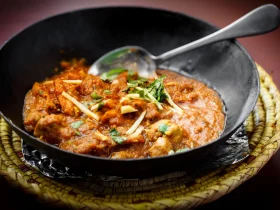

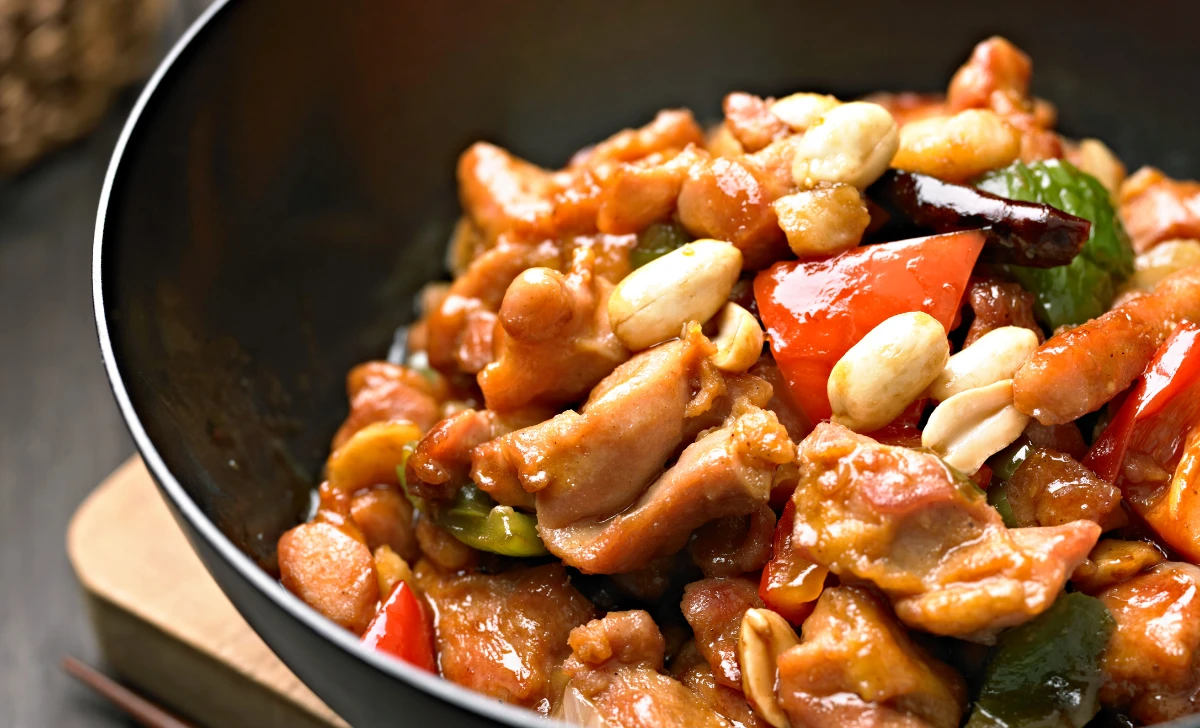

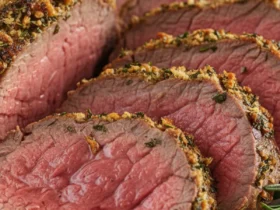
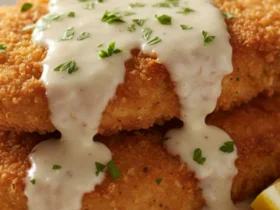
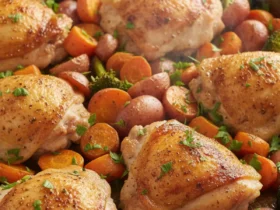
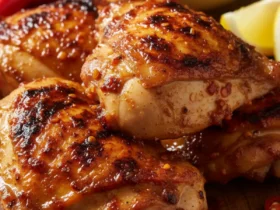
Leave a Review